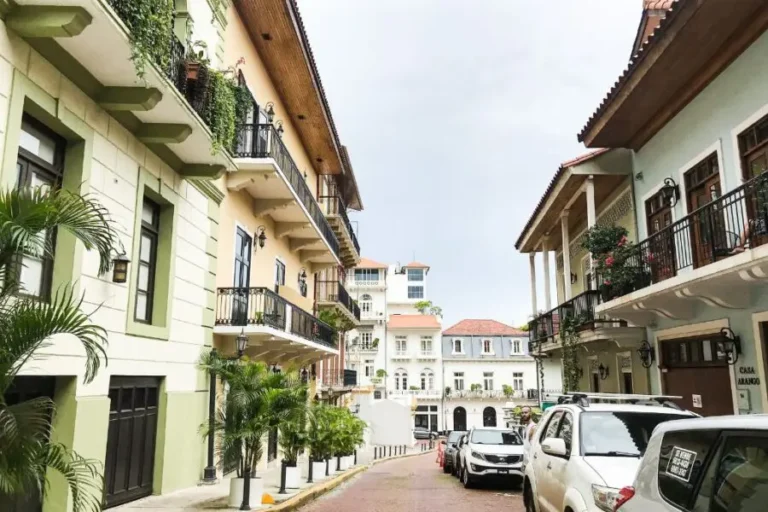Panama, a Central American country bridging two oceans, is a popular destination for travelers looking for adventure and natural beauty. But before going, the question is: Is Panama safe?
Crime rates in Panama are low compared to other countries. But, in large cities like Panama City, crime is higher in some areas. So, be aware of your surroundings and avoid displaying valuables openly. Keep personal belongings secure and only carry essential items when exploring.
Use hotel safes to store important documents and do research beforehand. Consult official advisories and seek guidance from locals or knowledgeable experts. This way, you can stay safe and have a memorable trip. Don’t forget that if you’re careful, Panama is a place of danger with a side of adventure!
Understanding the Safety Situation in Panama
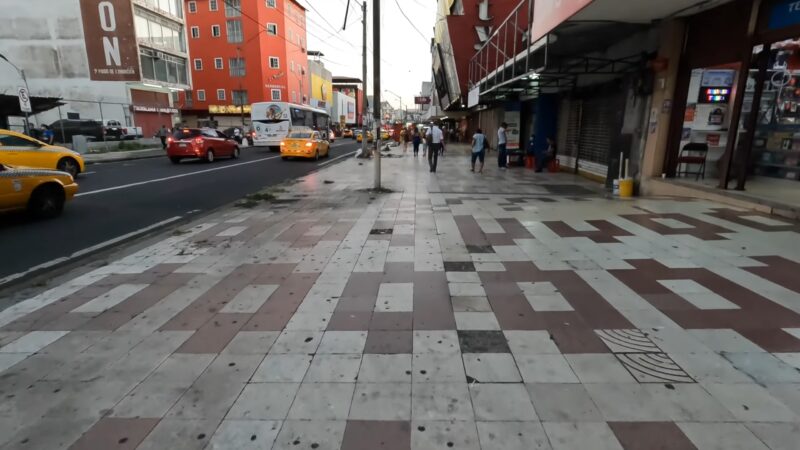
Anyone planning a trip to Panama should understand the safety situation. It has its own unique risks, but you can still have a great time if you’re careful.
Panama City is generally safe during the day. But, like most cities, there are areas that are best avoided at night. Stick to busy areas and use reliable transportation.
When visiting the beaches and other sites outside the city, stay informed of the potential risks. Some remote areas may not have access to medical care or emergency services. Research your destination before you go and bring a first-aid kit and plenty of water.
Crime rates in Panama have gone down, but petty thefts can still occur. Be aware of your surroundings and keep valuable items secure. Don’t show wealth or expensive jewelry.
Don’t miss out on the amazing experiences in Panama. Know the basics and be prepared, and you can have a fantastic vacation. So pack up and enjoy!
Researching and Planning Your Trip
To ensure your safety when planning a trip to Panama, research crime statistics and safety measures. Choose accommodations and locations that prioritize safety. Pack the right safety essentials for a secure journey. With these sub-sections in mind, let’s delve into the details of researching and planning your trip for a safe and worry-free experience.
Researching Crime Statistics and Safety Measures

Researching crime stats and safety measures is essential to plan a successful trip. Gather info about your destination’s crime rate and safety precautions. Below is a table of popular tourist spots and their safety numbers:
| Destination | Crime Rate (per 100,000 inhabitants) | Safety Measures |
|---|---|---|
| London | 90 | CCTV surveillance, increased police presence |
| Tokyo | 20 | Efficient public transport system, low crime rate |
| Paris | 150 | Police patrols, secure tourist areas |
| New York City | 300 | Neighborhood watch programs, well-lit streets |
| Sydney | 70 | Community engagement initiatives, emergency helplines |
Consider unique aspects of each destination too. Learn local customs and traditions to blend in. Also, stay updated with travel advisories.
To ensure safety:
- Dress appropriately and avoid flashy jewelry or accessories.
- Keep a copy of important documents separate.
- Use reliable transportation.
- Stay vigilant in crowded areas.
Research crime statistics and safety measures to make informed decisions. Even in safe spots, practice common sense precautions for worry-free travel. When choosing accommodations, prioritize both comfort and security.
Choosing Safe Accommodations and Locations
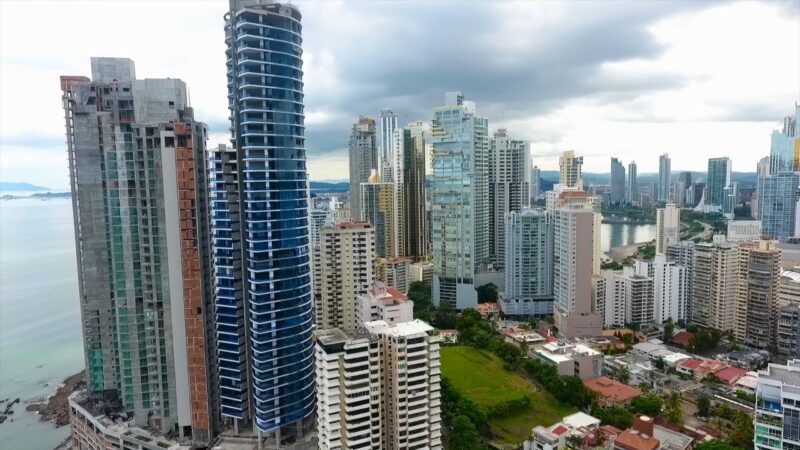
Safety is a top priority when planning a trip. Here are 5 key points to keep in mind:
- Research the crime rate in the area ahead of booking accommodation. Check reliable sources for info on safety and recent incidents.
- Read reviews from previous guests to get a sense of the security measures in place. Look for mentions of lit entrances, cameras, and secure access points.
- Choose locations that are popular with tourists. These areas usually have better infrastructure, more police, and less petty crime.
- Avoid secluded places, especially if you’re traveling alone. Go for places near public transport or with easy access to main roads.
- If unsure about safety, reach out to local tourism authorities or forums for advice.
Remember to consider any unique details specific to your destination that could affect safety. For example, some cities have stricter alcohol rules and pickpocketing hotspots. So, stay informed to make informed decisions.
[su_note note_color=”#93e6b7″]Pro Tip: Invest extra time into researching safe neighborhoods within a city. This can boost your travel experience while keeping you safe.[/su_note]
Don’t leave home without the essentials, unless you want an adventure!
Packing the Right Safety Essentials
Packing the right safety essentials is a must for any trip. Here are the main points to remember:
- Pack a fully equipped first aid kit, including band-aids, antiseptic wipes and necessary meds.
- Bring items for protection against the elements – sunscreen, insect repellent, hat etc.
- Don’t forget safety gear for activities – a whistle, life jacket if near water etc.
- Bring a portable charger or extra batteries for your electronic devices.
- Carry a photocopy of important documents – keep them separate from originals.
- Let someone know your travel plans – who you’ll be staying with, how long you’ll be gone.
Research the safety requirements of your destination too. With these tips in mind, you can travel with confidence and peace of mind. And stay safe in Panama with a map, compass and a blindfold, just in case you stumble on hidden treasure or a drug lord!
Navigating Panama Safely
To navigate Panama safely with transportation, street smarts, and personal safety in mind, and to deal with scams and petty theft, follow these travel safety tips and recommendations. Remain vigilant and prepared as you explore the beautiful country, ensuring a safe and enjoyable experience while avoiding potential risks.
Transportation Safety Tips
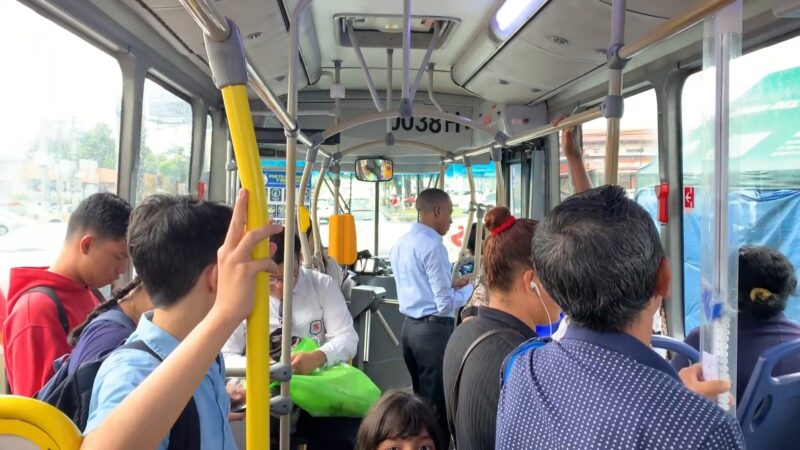
Prioritize safety while traveling in Panama! Here’s what to do for a secure transportation experience:
- Find reputable companies – licensed taxis or registered tour operators.
- Use taxi apps or call trusted taxi services for rides.
- Be careful during crowded peak hours on public transport.
- Keep your belongings close and avoid displaying expensive items.
- Stay alert and aware, especially in busy tourist areas.
- Pre-plan routes and tell someone you trust your travel plans.
For an extra layer of safety, carry a copy of your passport or ID with you. According to the U.S. Department of State, exercise vigilance when in Panama. Follow these tips and you’ll be sure to have a safe journey!
Street Smarts and Personal Safety
Street smarts and personal safety are key when visiting Panama. Keep these points in mind to stay safe:
- Be aware of your surroundings, people, and activities nearby.
- Don’t show off valuables or carry a lot of money.
- Stay in well-lit, crowded areas, especially at night.
- Watch out for strangers offering help or chatting.
- Use reliable transportation like registered taxis or reputable ride-sharing services.
Also, remember that thievery can happen anywhere. Secure your belongings and keep them in sight.
Follow these tips for extra safety:
- Walk with confidence and purpose.
- Dress modestly and don’t wear flashy items.
- Know where to turn if you need help: police stations, tourist info centers, and embassies.
Here’s a cautionary tale: A traveler was strolling around Panama City when they noticed danger. They took a taxi to get out fast. The driver said the area was known for crime. This shows that you should trust your gut and make informed decisions when in unfamiliar places.
In conclusion, be street smart and prioritize safety when in Panama. That way, you’ll have an amazing time without putting yourself at risk. Stick to the ‘sticky finger rule’: if it looks too good to be true, it probably is – unless you’re a magician!
Dealing with Scams and Petty Theft
Be aware of your surroundings at all times. Don’t show off valuable items such as phones or jewelry, as it may draw unwanted attention. Always keep your stuff secure. Use a money belt or discreet pouch for your passport, cash, and other important documents. Opt for registered taxis or pre-booked transfers so you don’t get scammed or robbed.
Learn about common scams in Panama. Understand techniques used by pickpockets and scam artists, like distraction tactics or fake police. Some parts of Panama have higher rates of theft than others. So, before you go, get info on the area, such as neighborhoods and cities. That way, you can make smart decisions and stay safe.
To remain safe in Panama:
- Dress modestly and try to speak basic Spanish. This can help to avoid scammers targeting tourists.
- Research good accommodations with good security. Read reviews about safety and consider staying in central areas.
- Use ATMs with caution. Stick to machines inside banks or well-lit places. Cover your PIN when entering it.
By following these tips, you can minimize chances of becoming a victim of scams and theft in Panama. Remember that being prepared and aware are essential for a safe and enjoyable experience of this beautiful country. From beaches to rainforest hikes, Panama offers amazing experiences.
Exploring Panama’s Attractions and Activities
To explore Panama’s attractions and activities with a focus on safety, delve into coastal areas and beach safety, outdoor adventures and wildlife encounters, and cultural experiences and nightlife safety. Each sub-section provides solutions for enjoying these activities in a secure and enriching manner.
Coastal Areas and Beach Safety
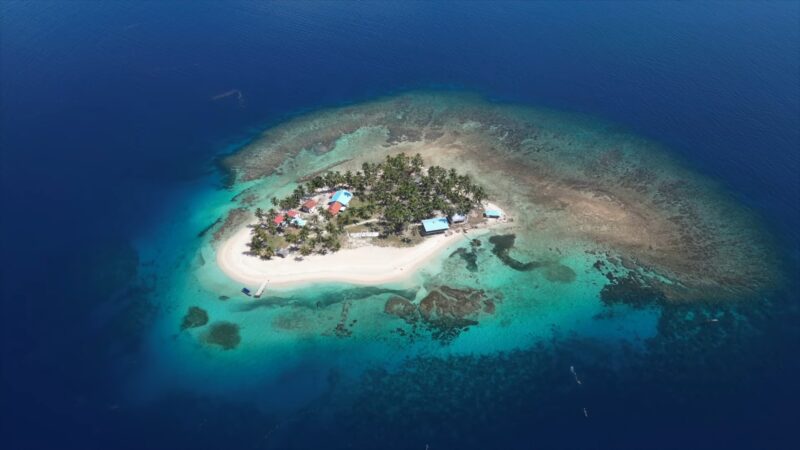
Panama boasts stunning coastlines on both the Caribbean Sea and the Pacific Ocean. Enjoy its beautiful sandy beaches, turquoise waters, and vibrant marine life. Safety is key when visiting Panama’s coastal areas – swim in areas with lifeguards. Heed warning signs and instructions from authorities about beach conditions.
For some unique activities, take a boat tour around the Pearl Islands archipelago. Snorkel and dive in its crystal-clear waters. Head to Bocas del Toro on the Caribbean coast for surfing, paddleboarding, and kayaking. Explore coral reefs or go on a journey through mangrove forests.
Be aware of local wildlife like sea turtles and jellyfish. Panama holds the record for having an Atlantic and Pacific coast within 75 kilometers (47 miles) – the shortest distance in the world! Enjoy varied coastal experiences in this extraordinary destination.
Outdoor Adventures and Wildlife Encounters
In Panama, outdoor adventures and wildlife encounters are thrilling experiences for nature lovers. Take a hike between the lush rainforests, zip-line through the treetops, and spot colorful birds such as toucans and jaguars.
Venture into national parks like Soberania and Darien for biodiversity, and witness playful monkeys, sloths, and exotic frogs. For an incredible experience, travel to Coiba Island National Park for crystal-clear waters filled with marine life.
Did you know that Panama is home to over 900 bird species? With such a diverse avian population, birdwatchers flock to this tropical haven. If you’re brave enough, end the night with some karaoke in Panama City!
Cultural Experiences and Nightlife Safety
Unlock the cultural secrets of Panama! During the day, explore museums and historical sites, like the Panama Canal Museum and Biomuseo. At night, enjoy the vibrant nightlife – but with safety in mind.
Be aware of your surroundings. Stick to well-lit areas and trusted establishments. For added security, travel in a group or hire reputable transportation services.
Consider joining guided tours or hiring local guides. They can help you navigate the language barrier and local customs. Research popular nightlife spots in advance to choose venues known for their security measures. Ask locals and fellow travelers for recommendations on safe places to visit after dark.
Combine cultural exploration with safety and you’ll have an unforgettable experience.
Interacting with the Locals
To navigate your interactions with the locals in Panama, equip yourself with cultural etiquette and respectful behavior, as well as tips for language and communication. Understanding the customs and showing respect will help you connect with the people and make your experience in Panama more enriching and enjoyable.
Cultural Etiquette and Respectful Behavior
When going to a foreign country, it is wise to be aware of accepted behavior and etiquette. For example, in some cultures, removing shoes when entering a home is respectful. Learning how to greet locals the right way speaks volumes. In Japan, bowing is the way to go.
Additionally, different countries have different body language rules. Eye contact may be seen as a sign of confidence in some places, but rude in others. Furthermore, each culture has certain taboo topics. Politics and personal matters should be avoided in conversation to show respect for their values. And lastly, learning key phrases is essential when interacting with locals.
Language and Communication Tips
Learn a few basic phrases in the local language. Respect their culture and it may open doors to meaningful interactions.
Notice non-verbal communication. Gestures and facial expressions can be different across cultures, so observe and adjust.
Show patience and understanding when there’s a language barrier. Speak slowly and use simple words. Be ready to repeat or rephrase.
Look out for communication styles. Pay attention to tone of voice and body language to understand the intentions. Remember cultural context. Some countries take time for small talk before business, others prefer to be direct.
I once went to Japan and got lost with no knowledge of the language. Approaching locals was difficult, but I gave it a try. They helped me find my way back – their hospitality was amazing. It reminded me of human connection beyond language.
When traveling, effective language skills can make it unforgettable. Appreciate the culture and adapt communication style. To make friends, consider offering street tacos as bribes!
Additional Safety Considerations
To ensure your safety when traveling to Panama, it is essential to consider additional safety factors. Explore the political stability and potential for protests in the country, as well as the preparation required for natural disasters and emergencies. By addressing these sub-sections, you will be equipped with valuable knowledge to navigate potential risks and enjoy a secure travel experience in Panama.
Political Stability and Protests
Political stability and protests can affect safety when traveling. To make informed decisions, consider the following:
- Analyze the current political climate of the destination.
- Evaluate potential for civil unrest or demonstrations.
- Monitor news for any recent protests or events.
- Consider the influence of social media on protests.
- Observe the government’s response to past protests.
History, changes in leadership, and international relations can also affect political stability and protests.
Here’s a story that illustrates the importance of understanding a destination’s political stability. Tourists visiting a country during an election period found themselves in a protest. They were unaware of the possible risks and had to rely on local authorities to get to safety.
This story emphasizes the importance of staying informed about political stability and protests before traveling. Being aware and prepared can help prevent danger during unexpected events.
Travelers should stay up-to-date with current affairs and seek guidance from reliable sources. Have a backup plan too, as it’s never wise to put all your eggs in one earthquake-prone basket.
Natural Disasters and Emergency Preparedness
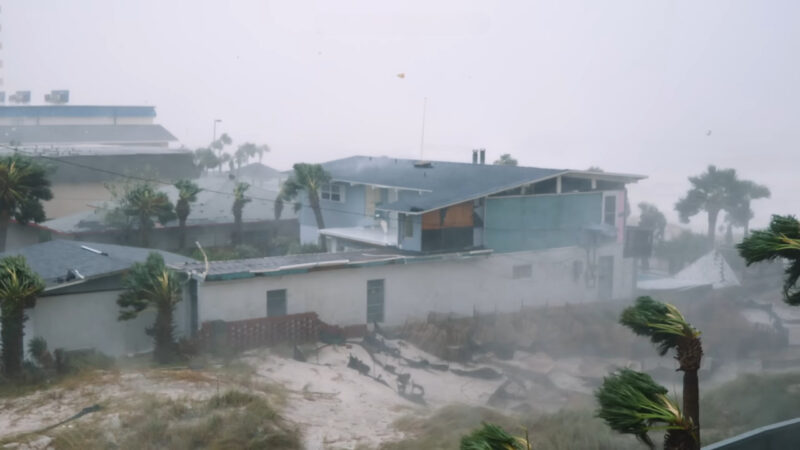
Natural disasters can strike any time, so emergency preparedness is key. To stay safe, you must be equipped and informed. Here are some safety tips:
- Keep up-to-date on local news and weather.
- Make an emergency plan with family – including a meeting point, contacts, supplies.
- Prepare an emergency kit with food, water, medications, flashlights, batteries, first aid.
- Know how to switch off utilities in case of emergencies.
- Learn evacuation routes and shelters near you.
Also, secure heavy furniture/appliances to prevent them from toppling. Install smoke detectors/carbon monoxide alarms at home for early warnings.
FEMA says only 39% of Americans have an emergency plan. So, remember: staying safe is serious! Unless you’re a featherweight boxer – then you can take it lightly.
Conclusion
My personal experience in Panama is that it’s a safe, enchanting destination for tourists. It’s loaded with culture, spectacular scenery, and friendly hospitality – making it a great place to visit. Still, like when you travel anywhere, it’s important to be mindful and take precautions.
Panama has made great strides in terms of safety. The government has taken steps to reduce crime and guarantee the safety of travelers. Plus, there’s a dependable police force that strives to keep order and protect locals & visitors.
When you explore Panama, it’s best to stay in populated areas and not wander off into isolated places. Also, keep watch of your possessions as there can be thievery at crowded spots or tourist attractions. Utilize hotel safes and secure lockers to provide an extra layer of security for your valuables.
Something special about Panama’s safety measures is their ‘Turismo Seguro‘, or ‘Safe Tourism’ police force. These officers patrol touristy spots, guaranteeing the safety of visitors and offering help if needed. This is a great initiative to make sure tourists feel safe.
To get a better understanding of Panama’s safety, here’s a real story. I once chatted with a traveler who’d just been to Panama. She had plenty of positive things to say about her trip, and mentioned feeling secure in all the places she visited – from Panama City to the tranquil beaches of Bocas del Toro.
Frequently Asked Questions
Is Panama safe for travelers?
Yes, Panama is generally a safe country for travelers. Like any other destination, it’s important to take precautions and be aware of your surroundings, but overall, Panama is considered safe for tourists.
Are there any areas in Panama that should be avoided?
While Panama is generally safe, it’s recommended to avoid certain areas, especially at night. These include some parts of Panama City, such as El Chorrillo and Curundu, as well as remote parts of the Darien Province. It’s always a good idea to research and follow the advice of local authorities before visiting any specific areas.
What are some general safety tips for traveling in Panama?
- Stay vigilant and be aware of your surroundings at all times.
- Avoid displaying expensive jewelry or electronics in public.
- Use reputable transportation options and avoid unmarked taxis.
- Keep your belongings secure and be cautious of pickpockets.
- Follow any travel advisories issued by your government.
- Respect local customs and traditions to avoid any potential misunderstandings.
Is it safe to drink tap water in Panama?
In most urban areas of Panama, the tap water is considered safe to drink. However, it’s always a good idea to carry a reusable water bottle and fill it with filtered or bottled water, especially in more remote or rural regions.
Are there any specific health concerns in Panama?
There are a few health concerns to be aware of when traveling to Panama. These include mosquito-borne diseases such as dengue, Zika, and malaria in certain regions. It’s advisable to take necessary precautions, such as using mosquito repellent and wearing long-sleeved clothing, especially if you are visiting tropical or rural areas.
What should I do in case of an emergency while in Panama?
In case of an emergency, dial 911 in Panama for immediate assistance. It’s also recommended to have the contact information for your embassy or consulate readily available. Familiarize yourself with the location of nearby hospitals or medical facilities before your trip.

